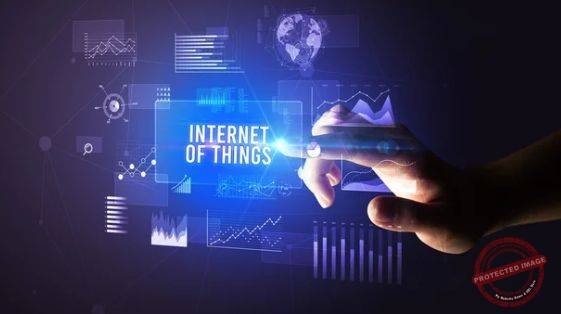How Ultra-Fast Networks and Intelligent Devices Are Creating the Foundation for a Hyperconnected World.
The Power of Convergence
The convergence of 5G and the Internet of Things (IoT) represents one of the most transformative developments in modern technology. Together, they form the backbone of the next digital revolution—an ecosystem of billions of interconnected devices communicating with near-zero latency and unprecedented speed.
While IoT provides the sensors, devices, and intelligence that capture and act on data, 5G provides the high-speed, low-latency infrastructure that allows those devices to communicate seamlessly in real time. This combination is not just improving connectivity—it’s redefining entire industries.
Why 5G Is the Missing Link for IoT
Earlier generations of wireless networks enabled basic IoT connectivity but lacked the speed and reliability to handle massive data exchanges.
5G changes everything. With speeds up to 100 times faster than 4G and latency as low as 1 millisecond, 5G allows IoT systems to operate at real-time responsiveness levels that were previously impossible.
This next-generation connectivity enables:
-
Autonomous vehicles to make split-second driving decisions.
-
Smart factories to coordinate robots and sensors dynamically.
-
Healthcare systems to perform remote surgeries with zero delay.
-
Smart cities to manage traffic, lighting, and utilities with precision and efficiency.
The result: a world where every connected object—from sensors to satellites—becomes part of an intelligent, responsive global fabric.
Network Slicing: Customizing Connectivity
A key feature that makes 5G ideal for IoT is network slicing—a technique that divides the physical network into multiple virtual networks, each optimized for specific use cases.
For example:
-
A low-latency slice supports autonomous drones and vehicles.
-
A high-bandwidth slice supports video surveillance and industrial analytics.
-
A massive IoT slice connects thousands of low-power sensors in agriculture or logistics.
This tailored connectivity ensures that IoT devices receive precisely the bandwidth, latency, and reliability their applications demand.
Edge Computing and 5G: A Perfect Partnership
The 5G revolution is amplified by the rise of edge computing, which processes data close to its source instead of relying solely on centralized cloud servers.
By combining 5G’s speed with local edge processing, organizations can achieve real-time analytics and automation. For example, a manufacturing robot on a 5G network can process quality inspection data at the edge, make immediate adjustments, and send summarized results to the cloud for long-term analysis.
This synergy enables faster decision-making, reduced bandwidth costs, and enhanced privacy, since sensitive data can remain local.
5G and IoT Across Key Industries
The convergence of 5G and IoT is already transforming major sectors worldwide:
-
Manufacturing: Smart factories use 5G networks to coordinate fleets of connected robots and sensors for predictive maintenance and real-time process control.
-
Transportation: 5G-enabled IoT systems power connected vehicles, autonomous fleets, and intelligent traffic management.
-
Healthcare: High-speed IoT medical devices enable remote diagnostics and tele-surgery with millisecond precision.
-
Agriculture: Farmers use IoT sensors connected via 5G to optimize irrigation, soil health, and crop yield.
-
Retail: 5G connectivity supports dynamic inventory tracking and immersive shopping experiences through augmented reality.
These applications illustrate how 5G serves as the digital nervous system of modern IoT ecosystems.
Security and Reliability in a Hyperconnected World
With billions of devices connecting over 5G, the security surface expands dramatically. Every connected endpoint represents a potential entry point for cyber threats.
To address this, enterprises are adopting Zero Trust architectures for IoT networks—authenticating every device, encrypting every transaction, and continuously monitoring network behavior.
Additionally, 5G networks themselves incorporate enhanced encryption, mutual authentication, and AI-driven intrusion detection, ensuring that performance does not come at the cost of security.
Economic and Environmental Impact
The combined 5G-IoT ecosystem is projected to create over $1.3 trillion in economic value by 2030, according to the World Economic Forum. Beyond economics, this convergence also drives sustainability gains—reducing energy consumption through intelligent resource allocation, predictive maintenance, and optimized logistics.
Smart cities and green IoT initiatives are already leveraging 5G to achieve carbon footprint reductions, transforming connectivity into a tool for environmental stewardship.
Closing Thoughts and Looking Forward
The convergence of 5G and IoT marks a defining moment in technological evolution. It’s not just about faster connectivity—it’s about smarter ecosystems capable of sensing, analyzing, and acting autonomously.
As 5G networks mature and global deployment expands, the vision of a real-time, responsive, and intelligent world is rapidly becoming reality.
In the coming years, 5G-enabled IoT will form the foundation for everything from autonomous vehicles to smart cities and Industry 5.0—creating a truly interconnected digital civilization.
References
-
“5G and IoT: A Transformative Convergence” – Forbes Tech Council
https://www.forbes.com/sites/forbestechcouncil/2024/03/25/5g-and-iot-a-transformative-convergence -
“How 5G Will Power the Internet of Things” – Qualcomm Insights
https://www.qualcomm.com/research/5g/how-5g-will-power-iot -
“Network Slicing Explained” – Ericsson Mobility Report
https://www.ericsson.com/en/reports-and-papers/network-slicing -
“The Role of Edge Computing in 5G-IoT Integration” – TechTarget IoT Agenda
https://www.techtarget.com/iotagenda/feature/the-role-of-edge-computing-in-5g-iot-integration -
“5G and IoT Economic Impact Report 2030” – World Economic Forum
https://www.weforum.org/reports/5g-and-iot-economic-impact-report-2030
Author: Serge Boudreaux – AI Hardware Technologies, Montreal, Quebec
Co-Editor: Peter Jonathan Wilcheck – Miami, Florida
Post Disclaimer
The information provided in our posts or blogs are for educational and informative purposes only. We do not guarantee the accuracy, completeness or suitability of the information. We do not provide financial or investment advice. Readers should always seek professional advice before making any financial or investment decisions based on the information provided in our content. We will not be held responsible for any losses, damages or consequences that may arise from relying on the information provided in our content.



